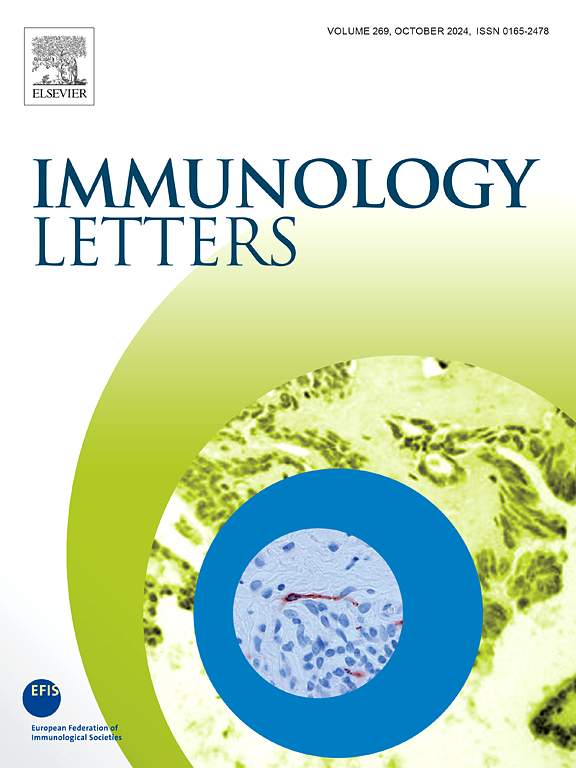Gene therapy strategies for RAG1 deficiency: Challenges and breakthroughs
IF 3.3
4区 医学
Q3 IMMUNOLOGY
引用次数: 0
Abstract
Mutations in the recombination activating genes (RAG) cause various forms of immune deficiency. Hematopoietic stem cell transplantation (HSCT) is the only cure for patients with severe manifestations of RAG deficiency; however, outcomes are suboptimal with mismatched donors. Gene therapy aims to correct autologous hematopoietic stem and progenitor cells (HSPC) and is emerging as an alternative to allogeneic HSCT. Gene therapy based on viral gene addition exploits viral vectors to add a correct copy of a mutated gene into the genome of HSPCs. Only recently, after a prolonged phase of development, viral gene addition has been approved for clinical testing in RAG1-SCID patients. In the meantime, a new technology, CRISPR/Cas9, has made its debut to compete with viral gene addition. Gene editing based on CRISPR/Cas9 allows to perform targeted genomic integrations of a correct copy of a mutated gene, circumventing the risk of virus-mediated insertional mutagenesis. In this review, we present the biology of the RAG genes, the challenges faced during the development of viral gene addition for RAG1-SCID, and the current status of gene therapy for RAG1 deficiency. In particular, we highlight the latest advances and challenges in CRISPR/Cas9 gene editing and their potential for the future of gene therapy.
RAG1 缺乏症的基因治疗策略:挑战与突破。
重组激活基因(RAG)的突变会导致各种形式的免疫缺陷。造血干细胞移植(HSCT)是治疗有严重RAG缺乏症表现的患者的唯一方法;然而,如果供体不匹配,治疗效果并不理想。基因疗法旨在纠正自体造血干细胞和祖细胞(HSPC),正在成为异基因造血干细胞移植的替代疗法。基于病毒基因添加的基因疗法利用病毒载体将突变基因的正确拷贝添加到 HSPC 的基因组中。经过漫长的开发阶段后,病毒基因添加疗法最近才获准用于 RAG1-SCID 患者的临床试验。与此同时,一种新技术 CRISPR/Cas9 首次亮相,与病毒基因添加技术展开竞争。基于 CRISPR/Cas9 的基因编辑技术可以对突变基因的正确拷贝进行有针对性的基因组整合,从而规避病毒介导的插入诱变风险。在这篇综述中,我们介绍了 RAG 基因的生物学特性、RAG1-SCID 病毒基因添加技术开发过程中面临的挑战以及 RAG1 缺乏症基因治疗的现状。我们特别强调了 CRISPR/Cas9 基因编辑的最新进展和挑战,以及它们在未来基因治疗中的潜力。
本文章由计算机程序翻译,如有差异,请以英文原文为准。
求助全文
约1分钟内获得全文
求助全文
来源期刊

Immunology letters
医学-免疫学
CiteScore
7.60
自引率
0.00%
发文量
86
审稿时长
44 days
期刊介绍:
Immunology Letters provides a vehicle for the speedy publication of experimental papers, (mini)Reviews and Letters to the Editor addressing all aspects of molecular and cellular immunology. The essential criteria for publication will be clarity, experimental soundness and novelty. Results contradictory to current accepted thinking or ideas divergent from actual dogmas will be considered for publication provided that they are based on solid experimental findings.
Preference will be given to papers of immediate importance to other investigators, either by their experimental data, new ideas or new methodology. Scientific correspondence to the Editor-in-Chief related to the published papers may also be accepted provided that they are short and scientifically relevant to the papers mentioned, in order to provide a continuing forum for discussion.
 求助内容:
求助内容: 应助结果提醒方式:
应助结果提醒方式:


